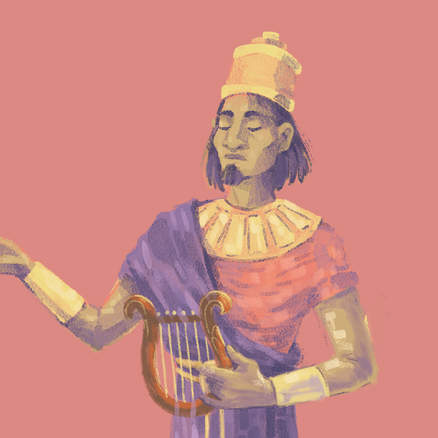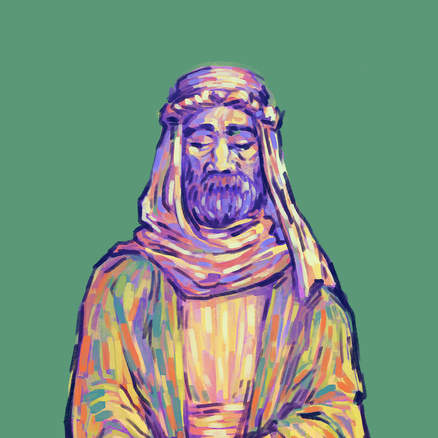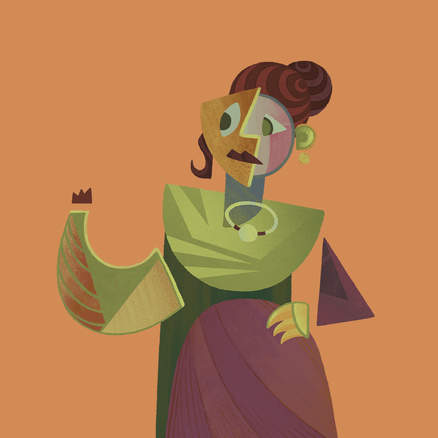
Poetry
Did you know a third of the Bible is written in poetry? Explore the unique characteristics of biblical poetry and how to read it well.
Script
Introduction [00:00-00:44]
Jon: So we’ve been learning how to read biblical narrative and showing how the Bible is one unified story. But thirty percent of the Bible is made up of ancient poetry. And I don’t know about you, but I don’t read a lot of stories where one out of three pages is some kind of poem.
Tim: Yet poetry is everywhere in the Bible. Some biblical books are entirely poetry. Most of the Hebrew prophets wrote masterful poems, and the majority of God’s speech in the Bible is represented as poetry. It’s also very common in biblical narrative for the story to pause while a character breaks out in poetic song. Like in the Exodus story there’s a narrative about Moses leading the Israelites through the waters of the sea, and that’s followed by a beautiful poem about the very same thing.
The Power of Poetry [00:45-01:35]
Jon: Why a story and a poem? Wouldn’t one version suffice?
Tim: Well, poetry has a different purpose than stories. Instead of describing the difference, let’s just experience it.
Jon: Okay.
Tim: So one part of the story goes like this.
Jon: “The waters were divided, and the Israelites went through on dry land, with a wall of water on their right and on their left.”1
Tim: That seems pretty clear.
Jon: Right.
Tim: Now the poem telling the same event...
Jon: O Lord, by the blast of your nostrils the waters piled up. Surging waters stood like a wall; deep waters congealed in the heart of the sea.2
Woah! A wall of surging water like jello! And divine nostrils? This is intense.
Tim: Yeah. The poem ignites your imagination through the experience of verbal art. And biblical poets did this with a specific set of tools, and that’s what we’re going to look at: the art of biblical poetry.
The Art of Biblical Poetry [01:36-04:22]
Tim: The basic unit of any poem is the line, and then many lines are designed together to make a poem.
Jon: Okay. I’m used to this kind of poem. There’s a meter, cadence––bum-bum-bum-BUM, bum-bum-bum-BUM––and there’s rhyme. But poems in the Bible don't work like this.
Tim: Yeah. Biblical poems are what you could call free verse. They don’t use meter like some traditions of poetry do, and they don’t use rhyme in the same way either.
Jon: So biblical poems have no order to them?
Tim: No. They just have a different kind of order. Biblical poems are most basically structured by couplets, two short lines that are carefully worded and placed beside each other. The first line makes the basic statement, and then the second line develops it in some way. It can do this by completing the thought, or deepening it with different words or images, or by contrasting it in some way.
So check out the opening of Psalm 51. You can see it in action. In the first couplet, the poet asks that God show grace and love, but how exactly? In the second line, he requests forgiveness for his failures.
Jon: Okay. This couplet is finishing one complete thought.
Tim: Right, and then the next couplet opens with washing as a metaphor. And then the second line offers a more vivid image, that of a priest in the temple purifying things so they can be in God’s presence.
Jon: Okay, so taking an image and deepening it.
Tim: Right, and then this third couplet opens with the poet’s awareness of his sin, deep inside. And that’s followed by a description of the sin as being “outside” of them. It’s like it’s in public, visible to themselves and other people.
Jon: So this couplet takes an idea and contrasts it.
Tim: Exactly.
Jon: So couplets, by nature, are a bit repetitive.
Tim: But the repetitive language forces you to slow down and linger over the feeling and meaning of it all, looking at each idea from more than one angle. And then groups of couplets can come together around one key idea. It’s like a diamond with many facets, each line offering a different glimpse into the same core reality.
Jon: So this poem is exploring what it’s like to be forgiven and offered a second chance.
Tim: And that’s the kind of experience that can change a person. It’s worth savoring and pondering. Now, biblical poets also use repetition on a larger scale. In many poems you’ll find a key line that’s repeated multiple times. That’s called a refrain. Or they’ll open and close the poem with a similar couplet, that’s called an inclusio.
Jon: Ah, so biblical poets love design.
Tim: Oh yeah. These are works of verbal artistry. These poets use repetition to create all kinds of elaborate patterns that invite the reader to make connections between different parts of the whole poem that open up even deeper layers of meaning.
Conclusion [04:23-04:50]
Jon: Cool, so I’m feeling at home with ancient Hebrew poetry.
Tim: But remember, poetry isn’t something you master and then move on. Biblical poems are a bottomless well. They’re packed with a surplus of meaning for those who are willing to slow down and ponder them.
Jon: And they are trying to pull my mind in new directions and discover new ideas.
Tim: Exactly. And there’s even one more tool biblical poets have to do that very thing, and that’s what we’ll look at in the next video.
Related Content

























